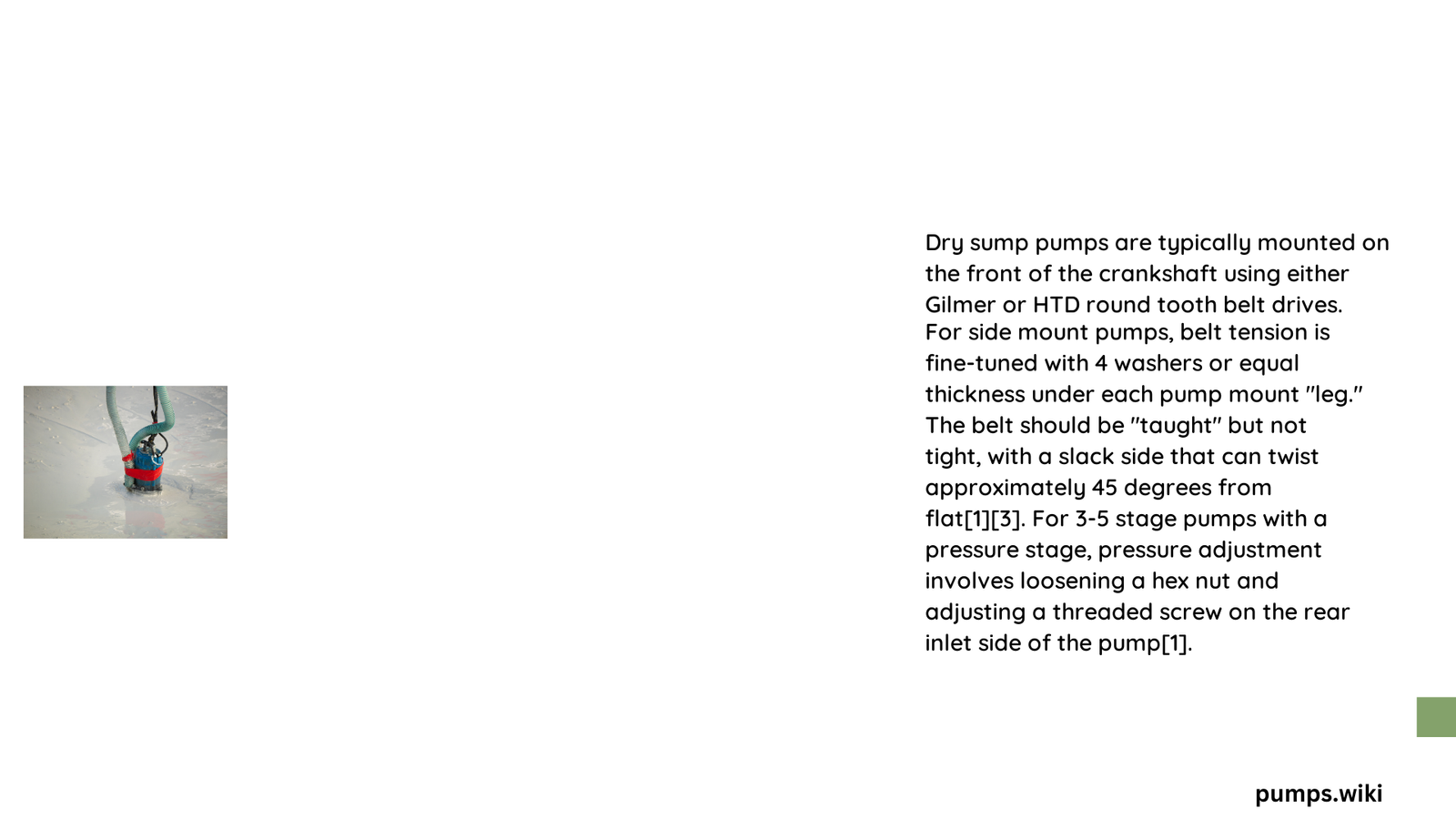Dry sump pump mounting represents a critical engineering challenge that directly impacts engine performance, oil circulation efficiency, and overall mechanical reliability. Proper mounting ensures optimal oil scavenging, prevents cavitation, and maintains consistent lubrication under high-stress conditions like racing and high-performance applications. Understanding the nuanced techniques of mounting a dry sump pump can significantly enhance engine longevity and operational stability.
What Makes Dry Sump Pump Mounting Critical?
Dry sump pump mounting isn’t just about attaching a component; it’s a strategic process involving precise engineering considerations. The mounting approach determines oil flow dynamics, system pressure, and overall lubrication effectiveness.
Key Mounting Considerations
| Consideration | Impact | Recommended Approach |
|---|---|---|
| Pump Height | Prevents Cavitation | Mount below oil tank |
| Line Routing | Oil Flow Efficiency | Short, direct lines |
| Bracket Strength | System Stability | High-strength materials |
How Should You Select Mounting Location?

Selecting the ideal mounting location involves multiple factors:
- Proximity to Oil Pan
- Minimize scavenge line length
- Reduce pressure drop
-
Enhance oil retrieval efficiency
-
Structural Compatibility
- Align with engine block mounting points
- Ensure robust attachment
- Prevent vibration and misalignment
What Materials Work Best for Mounting Brackets?
Mounting brackets must withstand significant mechanical stress. Recommended materials include:
- Aluminum Alloys
- Lightweight
- High strength-to-weight ratio
-
Corrosion resistant
-
Chromoly Steel
- Superior tensile strength
- Excellent durability
- Ideal for extreme performance environments
What Are Common Mounting Challenges?
Professionals encounter several challenges during dry sump pump mounting:
- Alignment Precision
- Vibration Dampening
- Thermal Management
- Space Constraints
Mitigation Strategies
- Use precision machined brackets
- Implement rubber isolation mounts
- Design custom mounting solutions
- Consider thermal insulation techniques
How to Ensure Proper Installation?
Step-by-Step Mounting Process
- Measure and Plan
- Assess engine bay topology
- Create detailed mounting template
-
Verify component clearances
-
Prepare Mounting Surface
- Clean and inspect mounting points
- Check for structural integrity
-
Apply anti-corrosion treatments
-
Install Mounting Hardware
- Use torque-specific fasteners
- Apply thread-locking compounds
- Verify uniform tightening sequence
What Performance Metrics Matter?
Critical performance metrics include:
- Oil scavenging rate
- Pressure consistency
- Minimal system losses
- Temperature management
Recommended Performance Targets
- Scavenging Rate: 1.5-2x engine displacement
- Pressure Variation: <±5 PSI
- Temperature Rise: <20°F above ambient
Expert Recommendations
- Always prioritize short, direct oil lines
- Use high-quality AN fittings
- Implement redundant mounting points
- Regularly inspect mounting hardware
Conclusion
Successful dry sump pump mounting requires a holistic approach combining mechanical precision, engineering knowledge, and performance-oriented design.
